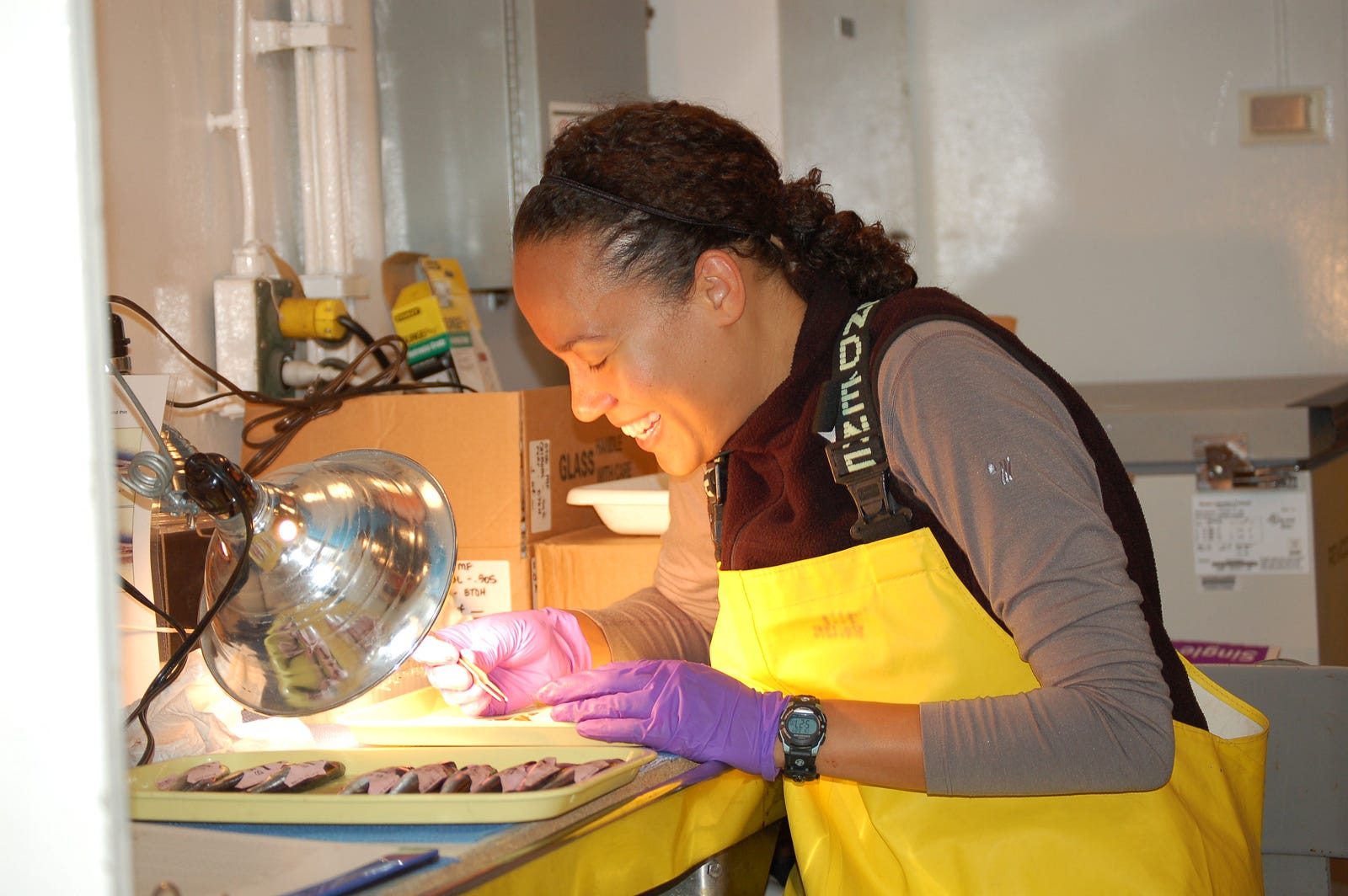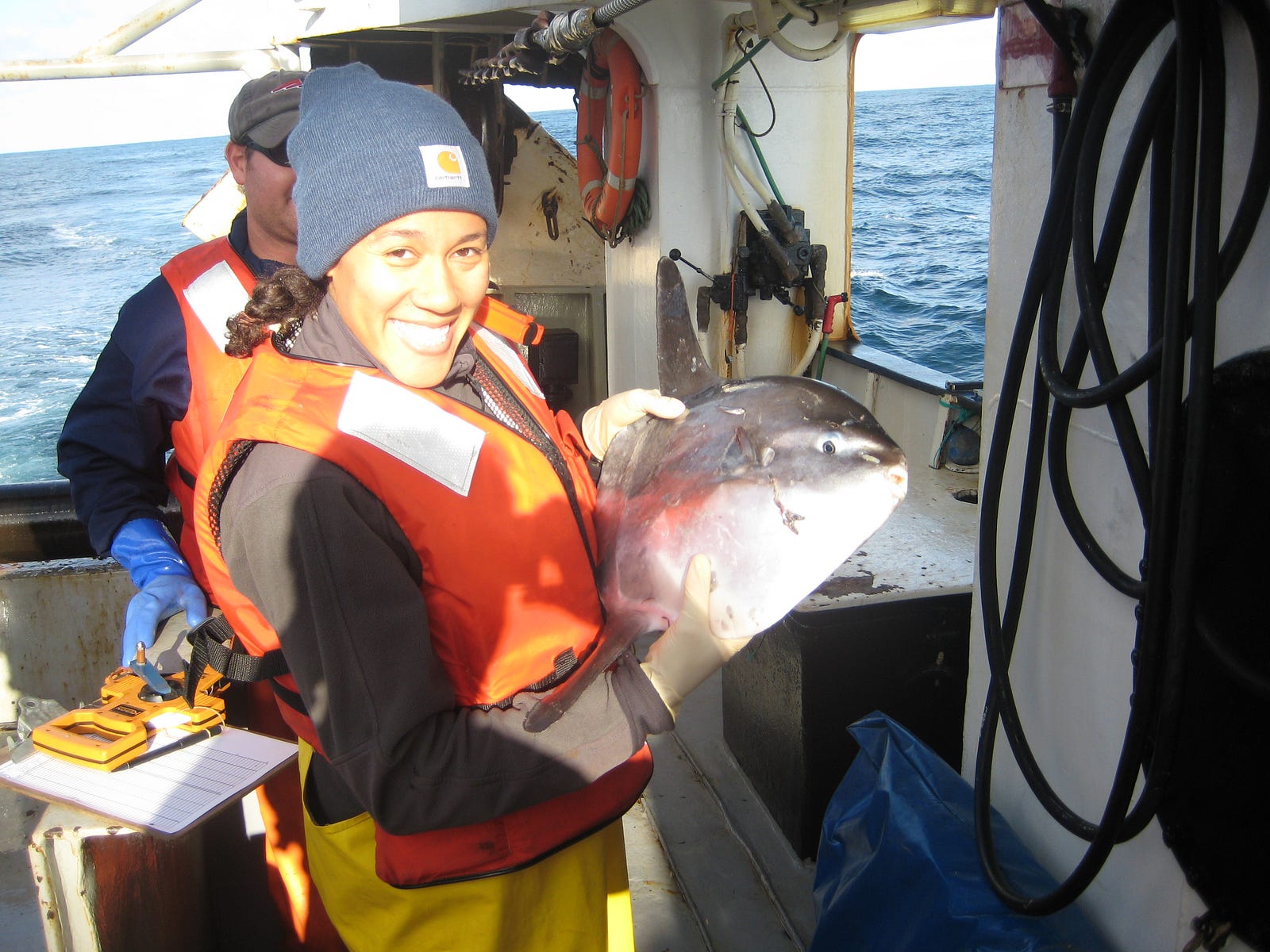noelle bowlin
Smart Girls and the Sea: Meet Noelle Bowlin
“Ask a lot of questions. Don’t be afraid if you don’t know the answers. It can be scary sometimes, but if you don’t know the answer, other people don’t either. The person with the answer is excited to help you.” — Noelle Bowlin
Smart Girl Catie Fyfe sat down with Noelle Bowlin, a Research Fishery Biologist at Southwest Fisheries Science Center, to discuss her work for the National Oceanic and Atmospheric Administration which takes her out on the water as well as to the lab studying the fish that we eat!

Catie Fyfe: What do you study and why is it important?
NB: I study anchovies and sardines with the group at NOAA Fisheries here in La Jolla, CA. We do that because most people in the US have a connection to these fish. Some people eat them — I eat them! They are healthy and sustainably harvested. They are also used as food for other types of fish like tilapia, feed for chickens, and fertilizer for crops.
I focus on larval fish, the early life stages. I try to answer questions like: how many are there, and how healthy are they in the California Current off the Pacific Coast? Most of the time in the lab I look at larvae, but I just got off a boat where I was studying the adults. If the adult fish aren’t healthy, then we see a lot fewer eggs and fewer fish next year. We also look at the ear bones of the fish, called otoliths. It’s like taking the core from a tree and counting the rings. You can do that with a fish ear bone and see how old they are.
All this information goes into coming up with the stock assessment. The stock assessment is like a weather forecast for how many fish we expect to see next year. This forecast allows people to make decisions about how many fish can be harvested this year and still leave the population healthy for next year. My work helps me be part of something larger, making sure there will be fish for my nephews and others in the future.
CF: What did you want to be when you were ten years old?
NB: At first I took earth science and loved it, and then I took chemistry and loved that, but then I took AP Biology and thought — whoa, this is where I am headed! I paid my own way through college so I had to work and pay off my loans, and I got a job at NOAA fisheries sorting through plankton. A few months later, they sent me out on a boat to help answer questions about the Ocean. I found out that we know more about the moon than we know about the bottom of the ocean, and I realized that I wanted to be a marine scientist.
CF: Who are your role models?
NB: My high school biology teacher opened my eyes to a whole new world. I identified with her; she is a first generation Japanese American woman. For me, with parents who are Jamaican immigrants, it was very helpful to see someone else who had similar challenges. My brother and I were the first ones of our family to go to college. Most of my friends had parents that were fully integrated to the culture, and we were new. Talking with my teacher really helped me — she said, ‘you can do this.’
CF: What advice would you give a Smartie if she wanted to pursue a career in ocean science?
NB: Ask a lot of questions. Don’t be afraid if you don’t know the answers. It can be scary sometimes, but if you don’t know the answer, other people don’t either. The person with the answer is excited to help you.

This article was written for Smart Girls by Catie Fyfe, School and Family Programs Manager at the Seattle Aquarium. Read more from Catie below:
Never miss a story from Amy Poehler's Smart Girls, when you sign up for Medium. Learn more
- Get link
- X
- Other Apps
Comments
Post a Comment